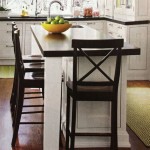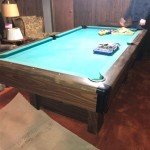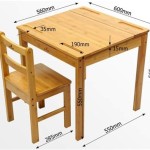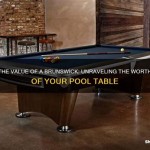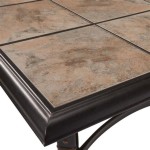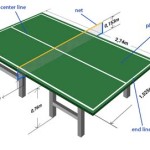Char-Broil Portable Grill Regulator: Understanding Its Function and Maintenance
The Char-Broil portable grill regulator is a crucial component for the safe and efficient operation of portable gas grills manufactured by Char-Broil. It is designed to manage the flow of propane gas from a portable propane tank to the grill's burners, ensuring a consistent flame and optimal cooking performance. Understanding the regulator's purpose, identifying potential issues, and implementing proper maintenance procedures are essential for extending the life of the grill and ensuring user safety.
The regulator is specifically engineered to reduce the high pressure found within a propane tank (typically between 100 and 200 PSI, depending on temperature) to a much lower, usable pressure suitable for combustion in the grill's burners. This regulated pressure is typically around 11 inches of water column (WC), a standard measurement for gas appliance pressure. Without a regulator, the high pressure from the tank would cause a dangerous and uncontrolled gas flow, resulting in an unsafe cooking environment and potentially damaging the grill itself.
Char-Broil portable grills utilize different regulator designs depending on the model and intended use. Some regulators are designed for use with standard 20-pound propane tanks, while others are specifically designed for use with smaller, disposable 1-pound propane cylinders commonly used for camping and tailgating. It is critical to use the correct regulator type for the designated propane source to prevent leaks, damage to the grill, and potential safety hazards.
Key Point 1: Functionality and Operation of the Regulator
The Char-Broil portable grill regulator operates on a relatively simple, yet precise, mechanical principle. It consists of a diaphragm, a spring, and a valve. The high-pressure propane from the tank enters the regulator, pushing against the diaphragm. This diaphragm is connected to a valve that controls the flow of gas to the burners.
The spring exerts a counter-pressure on the diaphragm. The equilibrium between the propane pressure pushing on the diaphragm and the spring pressure determines the amount of gas that flows through the valve. As the gas is used by the grill's burners, the pressure downstream of the regulator decreases. This pressure drop causes the diaphragm to move, opening the valve further and allowing more gas to flow, maintaining the desired 11 inches of water column pressure at the burners.
The regulator also incorporates a safety feature, often a relief valve, designed to vent excess pressure in case of a malfunction or over-pressurization. This prevents a dangerous build-up of gas that could lead to an explosion or fire. It is essential to never tamper with or obstruct the relief valve, as it is a crucial safety component.
When connecting the regulator to the propane tank, it is vital to ensure a tight and leak-free connection. Applying a small amount of soapy water around the connection points and observing for bubbles is a common method to check for leaks. If leaks are detected, the connection should be tightened or the regulator replaced to eliminate the hazard.
Key Point 2: Common Problems and Troubleshooting
Several issues can arise with a Char-Broil portable grill regulator, affecting the performance of the grill. One common problem is a blocked or restricted regulator. This can be caused by debris, rust, or ice accumulation inside the regulator, hindering gas flow. Symptoms of a blocked regulator include a weak flame, difficulty lighting the grill, or the grill not reaching the desired temperature.
Another potential problem is a leaking regulator. Leaks can occur at the connection points between the regulator and the propane tank or at the regulator body itself. Leaks can be caused by damaged threads, worn seals, or corrosion. As mentioned earlier, a soapy water test is effective for detecting leaks. If leaks are detected, the regulator should be replaced immediately.
A faulty diaphragm can also cause problems. Over time, the diaphragm can become brittle or torn, leading to inconsistent gas pressure or a complete failure of the regulator. A damaged diaphragm can result in either too much or too little gas flowing to the burners, both of which are undesirable. Replacing a faulty diaphragm typically requires replacing the entire regulator assembly.
Freezing of the regulator, particularly in cold weather, can also affect performance. This is due to the rapid expansion of propane as it exits the tank, which can cause a cooling effect and lead to ice formation within the regulator. While not a common occurrence, it can temporarily disrupt gas flow. Gentle warming of the tank (not with open flame) can sometimes resolve this issue.
Troubleshooting regulator problems often involves visual inspection for damage, leak testing, and checking for obstructions. If the regulator is suspected of being faulty, replacement is generally recommended rather than attempting to repair it, due to the safety implications involved.
Key Point 3: Maintenance and Safety Procedures
Proper maintenance and adherence to safety procedures are paramount for ensuring the longevity and safe operation of the Char-Broil portable grill regulator. Regular inspection is recommended, particularly before each use. Inspect the regulator for signs of damage, corrosion, or leaks. Pay close attention to the connection points and the regulator body.
When connecting or disconnecting the regulator from the propane tank, ensure that the grill's control knobs are in the "off" position. This prevents accidental gas release and reduces the risk of fire. Always tighten the connection securely but avoid over-tightening, which can damage the threads or seals.
Never attempt to repair a regulator yourself unless specifically trained and qualified to do so. Regulators are precision devices, and tampering with them can compromise their safety features and lead to dangerous situations. Replacement is the preferred option for damaged or malfunctioning regulators.
Store propane tanks in a well-ventilated area away from heat sources, sparks, and open flames. Do not store propane tanks indoors or in enclosed spaces such as garages or sheds. Proper storage is crucial for preventing leaks and explosions.
Keep the regulator clean and free of debris. Periodically wipe down the regulator with a damp cloth to remove dirt and grime. Avoid using harsh chemicals or solvents, as these can damage the regulator's components.
When transporting a portable grill with a propane tank, ensure that the tank is securely fastened and cannot roll or tip over. Disconnecting the regulator from the tank during transport is a good practice, especially for longer distances.
Always follow the manufacturer's instructions for connecting, operating, and maintaining the grill and regulator. These instructions provide specific guidance for your particular model and are essential for safe and efficient operation.
In conclusion, the Char-Broil portable grill regulator is an essential safety device that enables the controlled and safe use of propane gas for grilling. Understanding its function, common issues, and proper maintenance procedures will ensure a safer and more enjoyable grilling experience.

Char Broil Grill2go Grill Parts Regulator Gas Control Valve Tru Infrared 2024 And Newer Grillparts Com Bbq Repair Replacement

Regulator Control Valve Charbroil

Regulator Charbroil

Regulator 29106013 Oem Char Broil Ereplacementparts Com

Charbroil Portable Gas Grill Replacement Long Tube Regulator Valve Fast Ship

Char Broil Grill2go Grill Parts Regulator Gas Control Valve Tru Infrared 2024 And Newer Replaces Older Part 29103224a Grillparts Com Bbq Repair Replacement

Char Broil Type 1 Hose And Regulator Qcc 5484667 Blain S Farm Fleet

Char Broil Steel Regulator At Com

Char Broil Portable Gas Grill Com

Regulator Control Valve 29102349 Oem Char Broil Ereplacementparts Com
Related Posts

